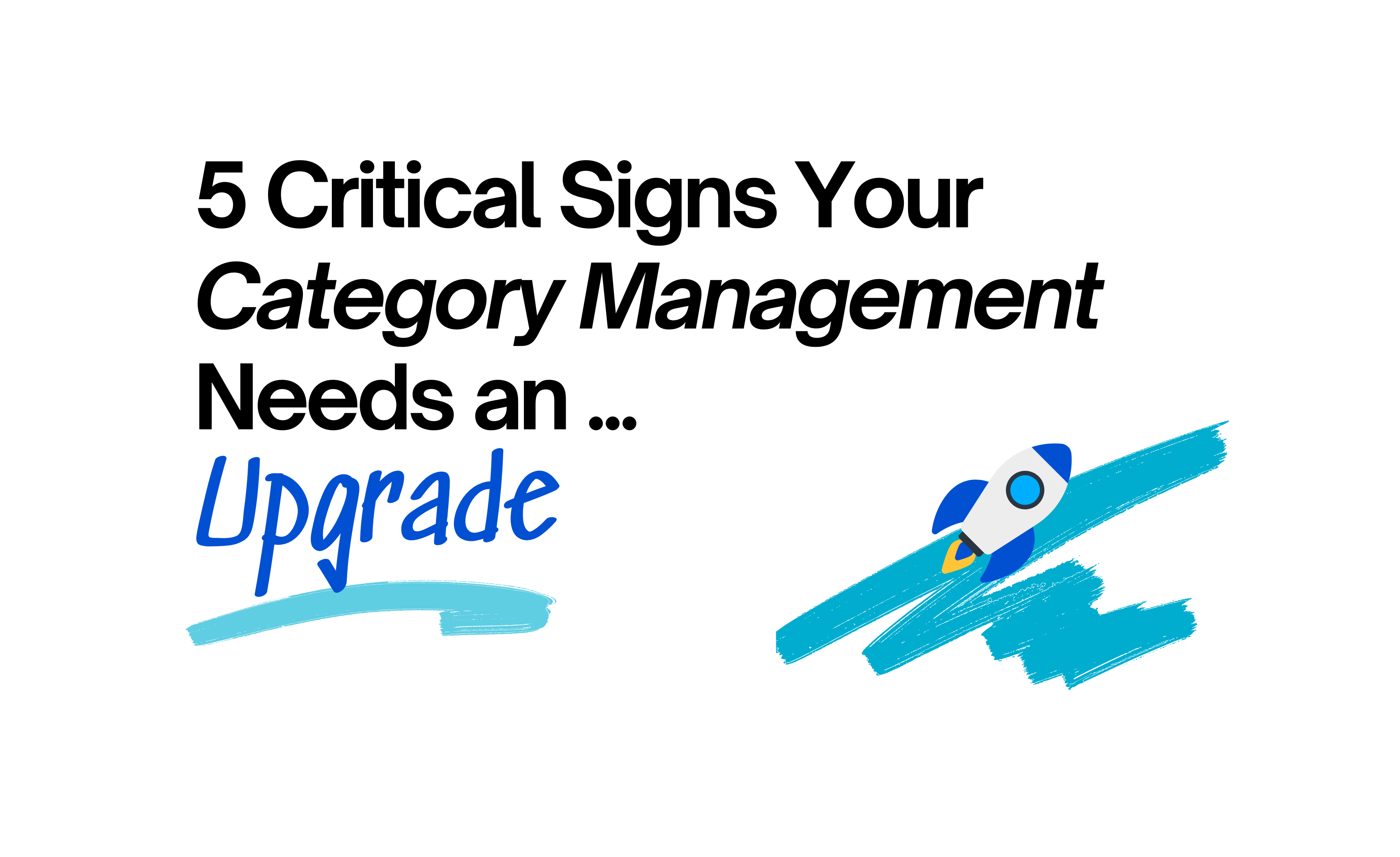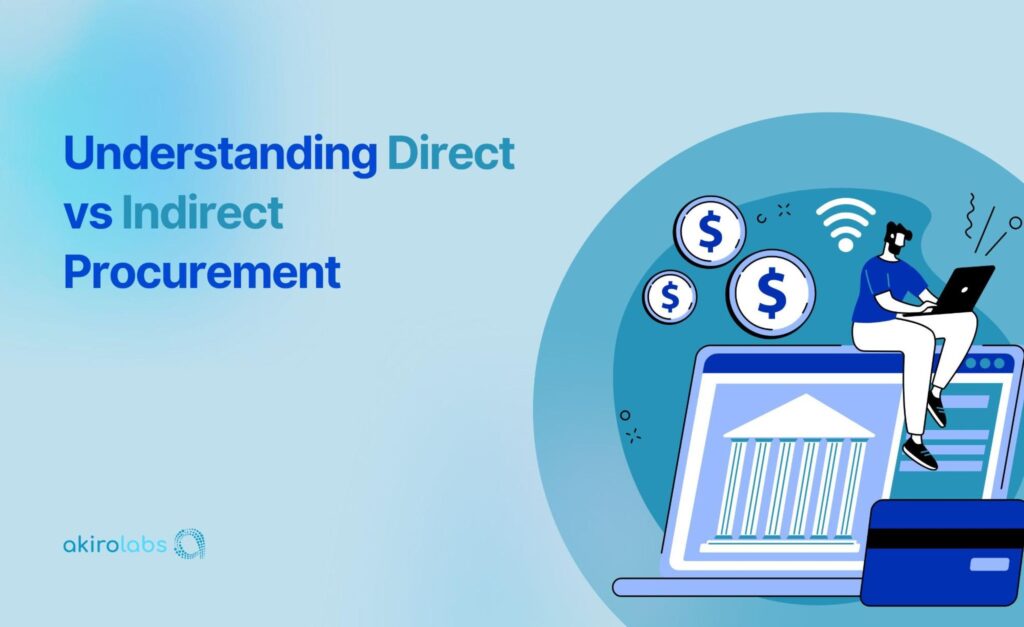The procurement function is at a critical crossroads in today’s evolving global world. The strategies that once sufficed—focused heavily on cost-cutting and managing supplier relationships—are now being tested by unprecedented challenges. The urgency of this situation cannot be overstated. Supply chains are more interconnected and fragile than ever. Geopolitical tensions and environmental regulations are reshaping the way we source materials, and technological disruptions are forcing us to reconsider how we protect and optimize our operations.
The truth is, the methods that once drove success in procurement are no longer enough. Our category management strategies, which have been the backbone of procurement, must now evolve to meet these new realities. Our environment demands a more dynamic and adaptable approach that integrates advanced technologies, leverages real-time market intelligence and prioritizes various target dimensions alongside cost efficiency. Adaptability is the key to survival in this rapidly changing landscape.
The traditional, linear approach to category management—focused solely on reducing expenses and maintaining supplier relationships—can no longer keep up with the complexities we face today. A purely cost-centric view may save money in the short term. Still, it can expose the organization to long-term risks across multiple dimensions, such as compromised quality, supply chain disruptions, and even reputational damage if suppliers do not meet the necessary sustainability and ethical standards.
As various digital tools increasingly free capacity from operational and tactical procurement tasks, the focus must shift towards a more strategic approach. Now is the time to embed strategic procurement into the daily routine of procurement teams, ensuring that every decision made is not just cost-effective but also aligned with broader business goals and resilient to future challenges. This strategic shift is crucial for the long-term success of your organization.
However, there is a significant capability gap in many procurement teams, and it’s understandable – Procurement was always seen as a cost-cutter function rather than a business value multiplier. This is why strategic procurement has often been overlooked and not established as a routine task, with many organizations underestimating its importance.
Reports suggest that Chief Procurement Officers and Procurement Leaders now see this as an immediate priority. In fact, Recent Oxford Economics findings indicate that procurement organizations worldwide are looking ways to shift away from their traditional role. When asked in the survey “Which of the following procurement tactics are you planning to use the most over the next two years to deliver value?” – 44% respondents chose category management as the leading value driver. ( Chart Below – Source : Oxford Economics Survey )
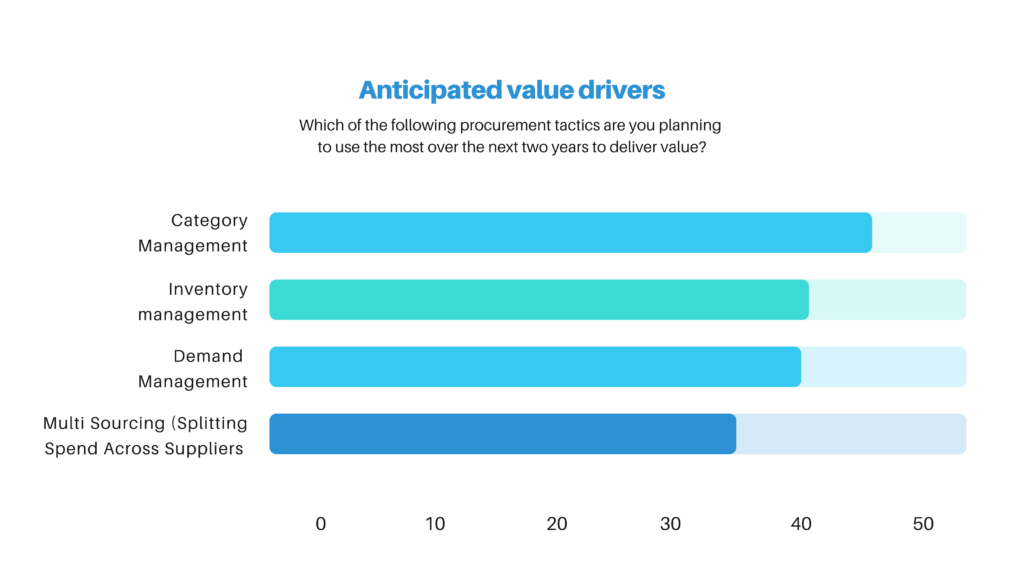
Yet, for many, the challenge lies in making this shift. Embracing a forward-thinking approach and adopting truly strategic procurement practices requires change management and a commitment to start, no matter where your organization currently stands on the procurement maturity spectrum.
There’s always room to be more strategic. Once you start integrating strategic procurement into your daily routine—with the support of the right technology—the process becomes exponentially more effective. The benefits are comparatively much more immediate with respect to similar change management and digital transformation projects: you start reaping value as your procurement operations become more agile, resilient, and aligned with your organization’s long-term business goals and values.
Let’s explore the top five reasons leading procurement leaders believe category management needs an upgrade.
1. Struggling with Supply Chain Complexity
Global supply chains have evolved dramatically over the past decade, becoming more complex and interconnected. Today’s supply chains involve managing multiple suppliers, dealing with fluctuating market conditions, and navigating the challenges of cross-border logistics. If your category management process is still focused primarily on cost savings and traditional supplier relationships, it’s likely to need help to keep up with these complexities.
Understanding the Complexity
Modern supply chains are influenced by a multitude of factors, such as geopolitical tensions, environmental regulations, and technological disruptions. For instance, the ongoing conflict between Russia and Ukraine has severely impacted global energy and agricultural supplies, leading to soaring prices and forcing companies to find alternative sources. Geopolitical tensions, like the U.S.-China trade disputes, continue to disrupt supply chains, particularly in the tech industry, where semiconductor shortages have caused significant production delays.
Environmental regulations are also tightening globally, with the European Union leading the charge through initiatives like the Green Deal and the Carbon Border Adjustment Mechanism (CBAM). These regulations are forcing companies to overhaul their supply chains to meet stricter sustainability criteria, with non-compliance leading to substantial financial and reputational risks. Learn more about how the European Green Deal is redefining supply chains in this article by Hermes.
Additionally, technological disruptions have proven to be a significant threat. A recent example occurred in July 2024 when a faulty update to CrowdStrike’s Falcon sensor software led to a global IT outage. This incident affected millions of devices worldwide, causing operational disruptions in critical sectors, including healthcare and aviation. The incident underscored the vulnerability of supply chains to cyber risks. Read more about how crowd strike outage created a ripple effect in the supply chain worldwide in this Forbes article.
2. Limited Focus on Cost Savings
Cost savings have traditionally been the primary focus of category management. Reducing expenses has always been a critical objective for procurement teams, driving efforts to negotiate better deals, streamline processes, and cut unnecessary costs. However, in today’s increasingly complex and competitive business environment, focusing solely on cost can be a myopic strategy.
While reducing expenses remains crucial, it is no longer the sole measure of procurement success. Modern procurement strategies must also prioritize various other target value dimensions that must align with overall business strategy, including sustainability, innovation, risk management, and supplier diversity among others to create long-term value for the organization.
The Bigger Picture: Value Beyond Savings
Focusing exclusively on cost savings might deliver short term financial benefits, but it can also result in significant long-term losses and a misalignment with broader business objectives. This potential for long-term losses should caution us against a narrow focus on cost in procurement decisions, especially when they are made in isolation from the goals of individual business units.
To explain this further, Imagine a scenario where a procurement team, driven by the mandate to reduce costs, negotiates a contract with a low-cost supplier for raw materials used in manufacturing. On the surface, this seems like a win—lower costs mean better margins, right? However, the business unit that relies on these materials might have different priorities, such as maintaining high product quality, ensuring sustainability, or accelerating time to market.
If the chosen supplier cannot consistently meet the quality standards required by the business unit, this could lead to defects, product recalls, or dissatisfied customers. The immediate cost savings achieved by the procurement team would quickly be offset by the costs of addressing these issues. More importantly, the potential damage to the brand’s reputation should be a cause for concern. Additionally, if the supplier lacks the flexibility to adapt to changes in demand or supply chain disruptions, it could delay the launch of new products, giving competitors an advantage.
Furthermore, this narrow focus on cost can ignore the strategic value that procurement can bring to the table. By working closely with business units, procurement teams can identify opportunities to target real business value levers – whether that’s through sourcing new, sustainable materials that align with the company’s environmental goals or by partnering with suppliers who can co-develop new products that differentiate the brand in the market.
For instance, a business unit focused on innovation might prioritize working with suppliers who invest in research and development. If procurement can align its strategy with this goal, the organization could benefit from innovative products that command premium prices, ultimately driving revenue growth that far outweighs the initial cost savings from a low-cost supplier. This potential for revenue growth through strategic procurement decisions should give us hope for the future of our organization.
In essence, procurement’s true value is realized when its strategies are aligned with the broader goals of the business units they support. This holistic approach ensures that every procurement decision not only considers cost but also the long-term impact on the organization’s growth, innovation, and market position. It’s about moving beyond the traditional view of procurement as a cost center and recognizing its potential as a strategic partner in driving business success.

3. Reliance on Outdated Frameworks
In light of the above, Traditional category management frameworks like the Kraljic Matrix are no longer sufficient for addressing the multifaceted challenges that procurement teams face. While these frameworks have provided a structured approach to managing procurement activities in the past, their limitations are becoming more apparent in today’s dynamic global marketplace. To stay competitive and resilient, procurement teams must move beyond these outdated methods and adopt more flexible, forward-thinking approaches.
The Limitations of Traditional Frameworks
The Kraljic Matrix and similar traditional frameworks, such as procurement chessboards, have long been used to categorize procurement activities based on supply risk and profit impact. These models help organizations prioritize their efforts by focusing on cost reduction and risk mitigation. However, these frameworks can fall short in considering multiple value dimensions, which is crucial for a comprehensive approach to procurement.
For example, the Kraljic Matrix tends to oversimplify the complexities of modern supply chains by focusing primarily on cost and risk. This oversimplification can lead to potential risks and consequences, such as leaving organizations unprepared for unexpected challenges in an era where geopolitical tensions, environmental concerns, and technological disruptions are the norm.
To understand this, let’s take a very simple example: consider a company employing a best-cost country sourcing strategy, where procurement teams source goods from countries offering the lowest production costs. Under the Kraljic Matrix, this might be seen as a clear win—low supply risk and high-profit impact. However, this approach often ignores other critical factors. For instance, sourcing from a low-cost country might lead to extended supply chains, making the company more vulnerable to geopolitical risks or natural disasters in that region. Additionally, this strategy might increase carbon emissions due to longer transportation routes, potentially conflicting with the company’s sustainability goals.
Adopting a More Dynamic Approach
To address these limitations, procurement teams must embrace more dynamic and adaptable frameworks beyond cost and risk management. One such approach is Strategic Business Scenario Modelling (SBSM), which allows organizations to simulate various procurement scenarios and assess their impact on multiple dimensions, including cost, risk, sustainability, and innovation.
For example, using SBSM, a procurement team considering best-cost country sourcing could model different scenarios to understand the trade-offs involved. The team could simulate the impact of potential supply chain disruptions, such as political instability or environmental disasters in the sourcing region. SBSM would also allow them to evaluate the environmental impact by comparing the carbon footprint of sourcing from a distant, low-cost country versus a local supplier. Although local sourcing might incur higher initial costs, it could offer greater resilience, lower carbon emissions, and better alignment with the company’s sustainability goals. Read more about scenario modeling and how akirolabs’ category management software enables it in our eBook“
4. Cross-Functional Collaboration & Early Involvement Challenges
Effective category management cannot exist in isolation in today’s complex business environment. The procurement function is inherently cross-functional, requiring input and collaboration from various departments such as finance, operations, marketing, and IT.
Yet, many organizations still struggle with siloed operations, where procurement decisions are made without adequate input from other stakeholders. This lack of cross-functional collaboration often leads to misaligned strategies, inefficiencies, and missed opportunities for value creation. Moreover, if there is an early procurement involvement with other stakeholders, the procurement strategies are built faster and more efficiently.
The Importance of Cross-Functional Collaboration
Procurement’s role has evolved from a cost-focused function to a strategic partner that drives innovation, risk management, and sustainability across the organization. However, achieving this level of influence requires seamless collaboration with other departments. For example, consider a situation where the procurement team is focused on securing the lowest possible cost for raw materials while the marketing department is simultaneously working on a campaign that promotes the company’s commitment to sustainability.
If these two departments operate in silos, the procurement team might opt for a supplier that offers the lowest cost but does not meet the company’s sustainability standards. This misalignment can undermine the marketing campaign, damage the brand’s reputation, and lead to customer dissatisfaction. In this case, the cost savings achieved by procurement are negated by the broader impact on the business.
Cross-functional collaboration is also crucial when implementing new technologies or processes. For instance, IT operations may have specific security and integration requirements to consider when selecting a new procurement software platform. If procurement and IT do not collaborate closely, the selected platform might not align with the organization’s existing infrastructure, leading to implementation delays, increased costs, and potential security vulnerabilities.
To overcome these challenges, procurement teams must proactively engage with other departments and stakeholders throughout the procurement process. This begins with fostering a culture of transparency and communication, where procurement is seen as a strategic partner rather than a gatekeeper.
Adopting strategic procurement platforms such as akiro can facilitate better collaboration by providing a centralized system where all relevant stakeholders can access data, track progress, and contribute to decision-making. These platforms often include workflow automation, real-time analytics, and collaboration tools, which help streamline the procurement process and ensure alignment with broader business objectives. Read more about how RBI achieved this with help of akirolabs’ category management software.
5. Opportunity to Digitally Transform Strategic Procurement
In recent years, much of the focus in procurement has been on digital transformation in tactical and operational areas. Companies have implemented automation to streamline processes, reduce manual tasks, and drive efficiency gains. However, as more organizations mature in adopting these technologies, the value they can extract from operational improvements is reaching a plateau.
The reality is that while operational and tactical procurement has been largely optimized, the real, untapped value lies in strategic procurement—a territory that has not yet fully embraced the potential of digital transformation. With the rise of technologies like AI, Generative AI (Gen-AI), and Large Language Models (LLMs), the opportunity to revolutionize strategic procurement is more significant than ever.
The Untapped Value in Strategic Procurement
Digital transformation in procurement has traditionally focused on improving operational efficiency—automating tasks, streamlining processes, and reducing manual workloads. While these efforts have brought gains, industry reports indicate that the value potential in strategic procurement is 4 to 5 times higher.
Strategic procurement involves long-term decision-making that aligns with broader business objectives. It involves managing supplier relationships not just for cost savings but also for targeting various value dimensions. Despite its critical importance, many organizations have yet to fully integrate digital tools into this area, leaving a significant gap between current practices and the potential benefits of a digitally transformed strategic procurement function.
Leveraging AI and Gen-AI for Strategic Procurement
The introduction of AI, Gen-AI, and LLMs offers a powerful way to bridge this gap. These technologies can analyze complex data sets, uncover patterns, and generate insights that enhance strategic decision-making. For example, AI can assess supplier performance on multiple dimensions, such as cost, quality, and innovation potential, enabling more informed and strategic sourcing decisions.
Generative AI (Gen-AI) is particularly valuable in simulating various procurement scenarios, helping teams understand the potential outcomes of different strategies. This capability allows procurement to transition from a reactive to a proactive function, optimizing sourcing strategies based on factors like supplier reliability and geopolitical risks.
Large Language Models (LLMs) further enhance decision-making by processing vast amounts of unstructured data, such as market reports and supplier communications. This provides procurement professionals with actionable insights that align with the organization’s strategic goals.
Embracing these technologies in strategic procurement will enhance efficiency and effectiveness and position procurement as a critical driver of innovation and value creation. Furthermore, these technologies can help establish strategic procurement as a routine task in your organization.
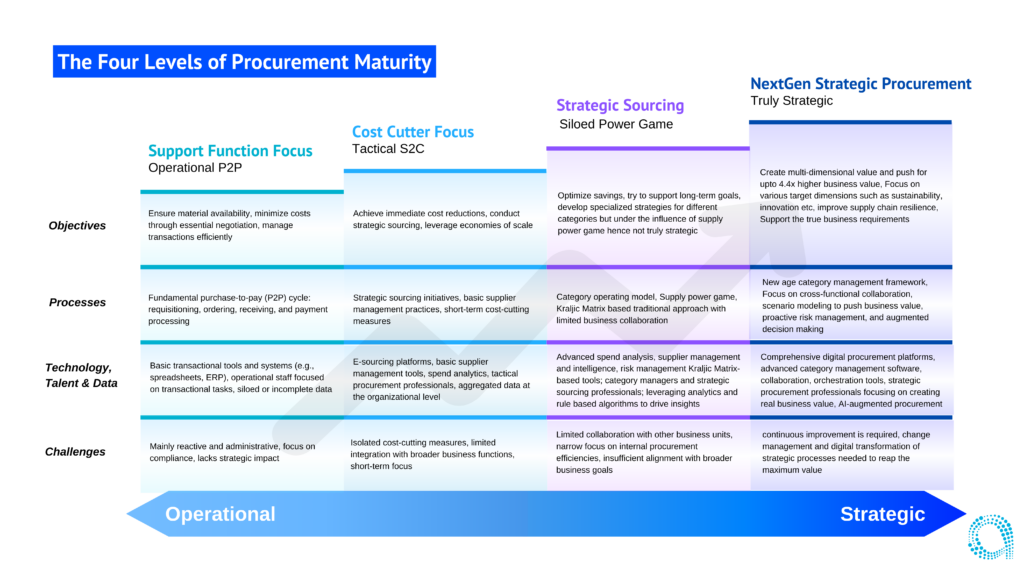
Conclusion
As we’ve explored through the five key signs, the traditional approaches to category management—once sufficient to drive success—are now being tested by unprecedented complexities in supply chains.
Each of these signs underscores a crucial reality: the need for an upgraded, strategic approach to category management is no longer optional—it is imperative. Whether it’s grappling with the increasing complexity of supply chains, moving beyond a narrow focus on cost savings, breaking free from outdated frameworks, fostering cross-functional collaboration, or embracing the untapped potential of digital transformation in strategic procurement, the message is clear.
The old ways of doing things are no longer enough to ensure long-term success. Upgrading your category management strategy is more than adopting new tools or techniques. It’s about rethinking procurement’s role within the organization, aligning it with broader business goals, and leveraging advanced technologies to drive greater value.
Adopting category management software in your procurement transformation roadmap offers a path forward; as your organization moves forward, remember that the journey toward enhanced category management is about addressing immediate challenges and positioning your procurement function as a vital driver of business value.
The time to act is now. The benefits of a strategic, digitally-enabled approach to category management are too significant to overlook. By upgrading your category management today, you can ensure that your organization is well-prepared to meet the challenges of tomorrow and thrive in an increasingly complex and competitive global market.
Ready to see how strategic procurement can transform your business? Book a demo today to explore how our category management software can help you upgrade your category management strategy and align it with your organization’s long-term goals.


